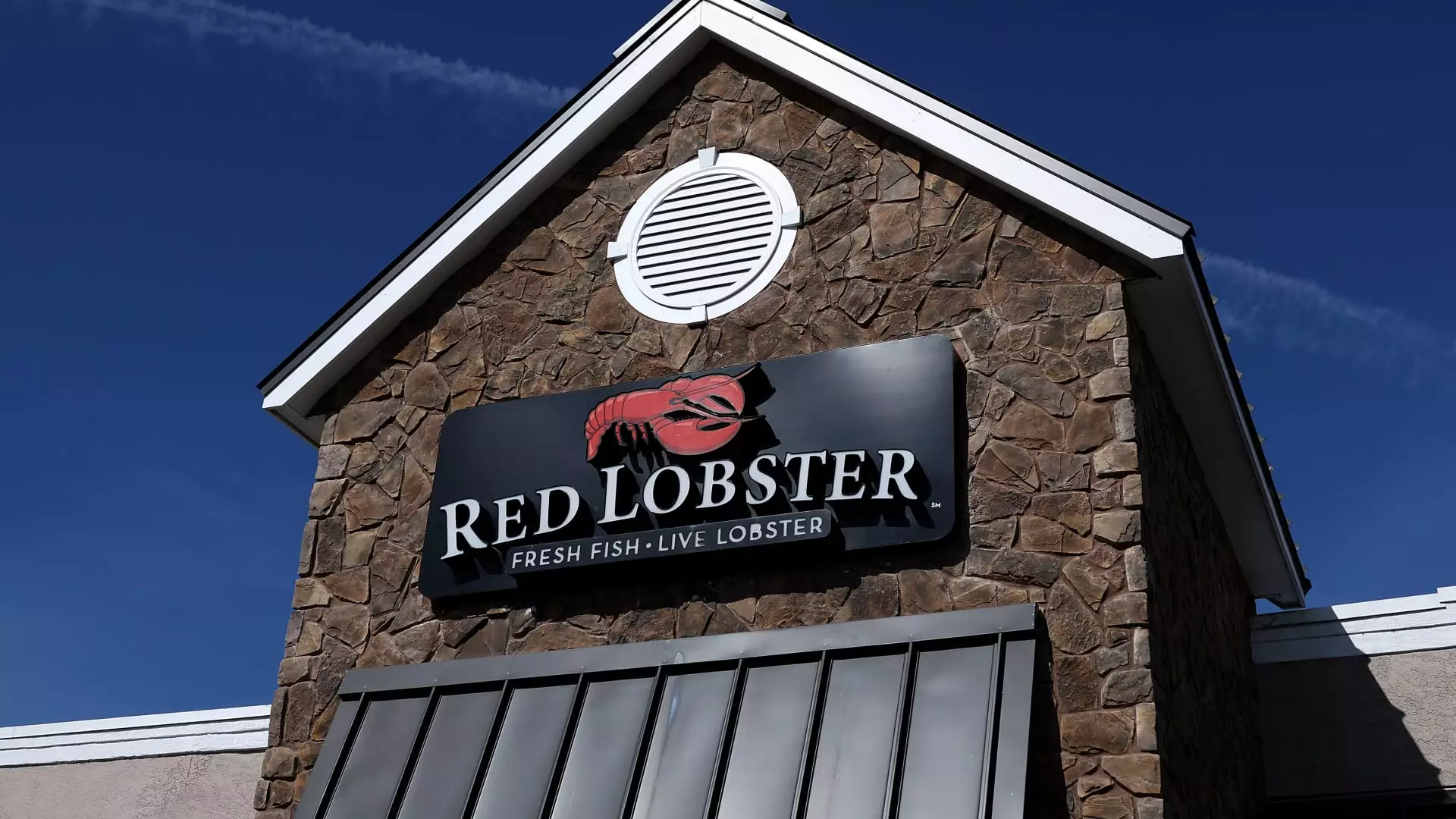Red Lobster, a popular seafood chain, has recently announced that it has filed for Chapter 11 bankruptcy protection as part of its efforts to downsize and attract potential buyers. With a stalking horse bid from its current lenders in place, Red Lobster is striving to navigate through significant debt and long-term lease obligations that have been weighing heavily on its financial health.
The company attributes its need for Chapter 11 protection to a variety of factors, including a challenging macroeconomic environment, an oversized and underperforming restaurant network, unsuccessful strategic decisions, and heightened competition within the restaurant industry. Jonathan Tibus, a restructuring expert appointed as CEO, points to these issues as key drivers behind the chain’s decision to seek bankruptcy relief.
Red Lobster, which boasts 551 locations in the U.S. and 27 in Canada, is currently in the process of closing underperforming restaurants and seeking approval from the bankruptcy court to terminate certain leases. These actions are part of a broader strategy to streamline operations and reduce costs in order to position the company for future growth and success.
The seafood chain, based in Orlando, Florida, has assets and liabilities ranging between $1 billion and $10 billion, with distributor Performance Food Group being its largest creditor. Despite the challenges it faces, Red Lobster remains optimistic about its ability to emerge from bankruptcy stronger and more focused on its core business operations.
Originally founded in 1968 and subsequently acquired by General Mills before being spun off into Darden Restaurants, Red Lobster has undergone multiple ownership changes over the years. In 2016, it was purchased by Thai Union Group, a seafood supplier, which later acquired the remaining stake from private equity firm Golden Gate Capital in 2020.
While Red Lobster managed to weather the storm of the pandemic, its business has continued to struggle, with a significant decline in customer traffic since 2019. This decline, coupled with leadership changes at the executive level, has created instability within the company and hindered its efforts to reverse declining sales trends.
In fiscal 2023, Red Lobster reported a net loss of $76 million, partially driven by a failed promotional initiative known as “endless shrimp.” This promotion, which aimed to drive foot traffic and boost sales, ultimately backfired as it led to higher costs and supply chain issues for the company.
The company is currently investigating the circumstances surrounding the “endless shrimp” promotion and exploring potential conflicts of interest with its suppliers. With a new CEO at the helm, Red Lobster is looking to address its financial challenges, stabilize its operations, and regain its competitive edge in the restaurant industry.
Red Lobster’s decision to file for bankruptcy reflects the challenges facing the company and the broader restaurant sector. By taking proactive steps to restructure its operations, reduce costs, and attract new buyers, Red Lobster is positioning itself for a successful turnaround and a brighter future ahead.

Leave a Reply